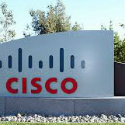Cisco Rolls Out New CCAP Chassis
Playing comeback against Arris and Casa, Cisco finally launches its new cBR-8 CCAP box with announced deployments by Comcast and Numericable.

CHICAGO -- INTX -- Staging what amounted to a coming-out party for its next-gen cable headend device, Cisco has begun commercial deployment of its advanced Converged Cable Access Platform (CCAP) chassis.
At the Internet and Television Expo (INTX) Tuesday, Cisco Systems Inc. (Nasdaq: CSCO) announced the long-awaited deployment of its powerful new cBR-8 chassis by two major cable operators in North America and Europe, adding that there are others it can't yet disclose. Comcast Corp. (Nasdaq: CMCSA, CMCSK) has started rolling out the new CCAP box in the US, while Altice Group, a rising cable power in Europe and Israel, is rolling it out on the Numericable-SFR cable systems in France. (See Altice Picks Cisco for CCAP, DOCSIS 3.1.)
Cisco, which has been testing the cBR-8 with numerous North American and European MSOs for up to a year and a half, is counting on the new CCAP box for big returns. The big cable vendor, which recently lost its leadership in the CCAP/cable modem termination system (CMTS) market to chief rival Arris Group Inc. (Nasdaq: ARRS), views the cBR-8 as a linchpin in its strategy for upgrading its cable customers' networks to DOCSIS 3.1 capacity and beyond.
Indeed, in its product deployment announcement, Cisco touts the cBR-8 as "a future-proof DOCSIS platform, designed to support the anticipated video and data services transformation over the next decade and beyond." Calling it the cable industry's "first Evolved CCAP," the vendor boasts that the headend chassis offers "full DOCSIS 3.1 capabilities and 10 times the speed and capacity of any existing product." (See Next-Generation CCAP: Cisco cBR-8 Evolved CCAP.)
Specifically, the cBR-8 -- which meets the CCAP qualifications by combining the traditional video processing functions of the edge QAM device and the traditional data processing functions of the CMTS in a single device -- is designed to support DOCSIS 3.1-type speeds of up to 10 Gbit/s downstream and 1 Gbit/s upstream. Looking further into the future, Cisco said the high-density chassis can also support proposed distributed CCAP architectures and full-spectrum video convergence, as well as SDN.
For the latest on the Gigabit Cities movement, visit Light Reading's dedicated Gigabit Cities content channel. And be sure to register to attend Light Reading's Gigabit Cities Live event on May 13-14 in Atlanta.
In addition, Cisco said the cBR-8 is "the cornerstone" of its "multi-access strategy for cable," which includes PON, service provider WiFi, SDN manageability and cross-platform orchestration. Plus, the company said its new chassis offers "a clearly defined path to a virtualized, cloud-based solution," eliminating the need for any new hardware upgrades.
Finally, the vendor said its new "hub-in-a-box" solution can help cable operators cut capital and operating expenses by up to 40% over five years, compared with other CCAP boxes.
The cBR-8 rollout, which industry analysts believe should jumpstart Cisco's CCAP sales, couldn't come too soon for the large vendor. Both Arris and upstart Casa Systems Inc. have been rapidly gaining market share on Cisco in the CCAP/CMTS space because they introduced their CCAP products a couple of years earlier. (See Report Sees Cable Capex Heading South.)
In a sign of the uphill battle that Cisco now faces to recapture share in the swiftly evolving cable access market, Arris made use of the INTX Show to make a major CCAP deployment announcement of its own. Arris announced Tuesday that its flagship E6000 CCAP device is now being deployed by Suddenlink Communications , the seventh-largest US MSO. Unlike the cBR-8, the E6000 supports DOCSIS 3.0 but not DOCSIS 3.1. However, it can be upgraded to the DOCSIS 3.1 spec.
— Alan Breznick, Cable/Video Practice Leader, Light Reading
Read more about:
EuropeAbout the Author(s)
You May Also Like




_International_Software_Products.jpeg?width=300&auto=webp&quality=80&disable=upscale)






